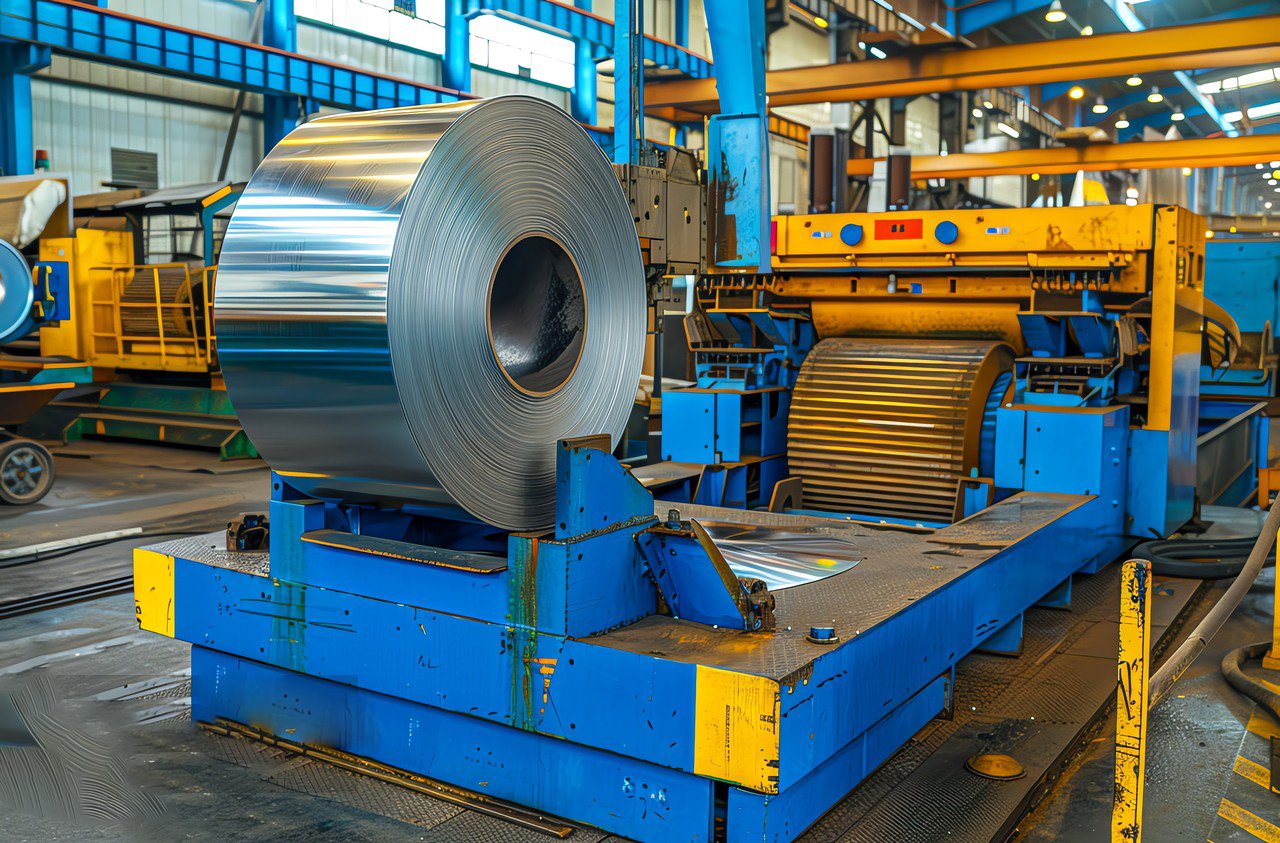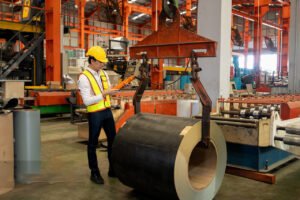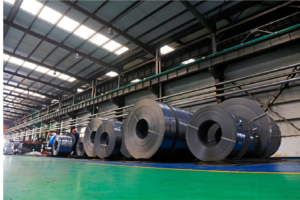Coil ID & OD Standards: What Buyers Must Know
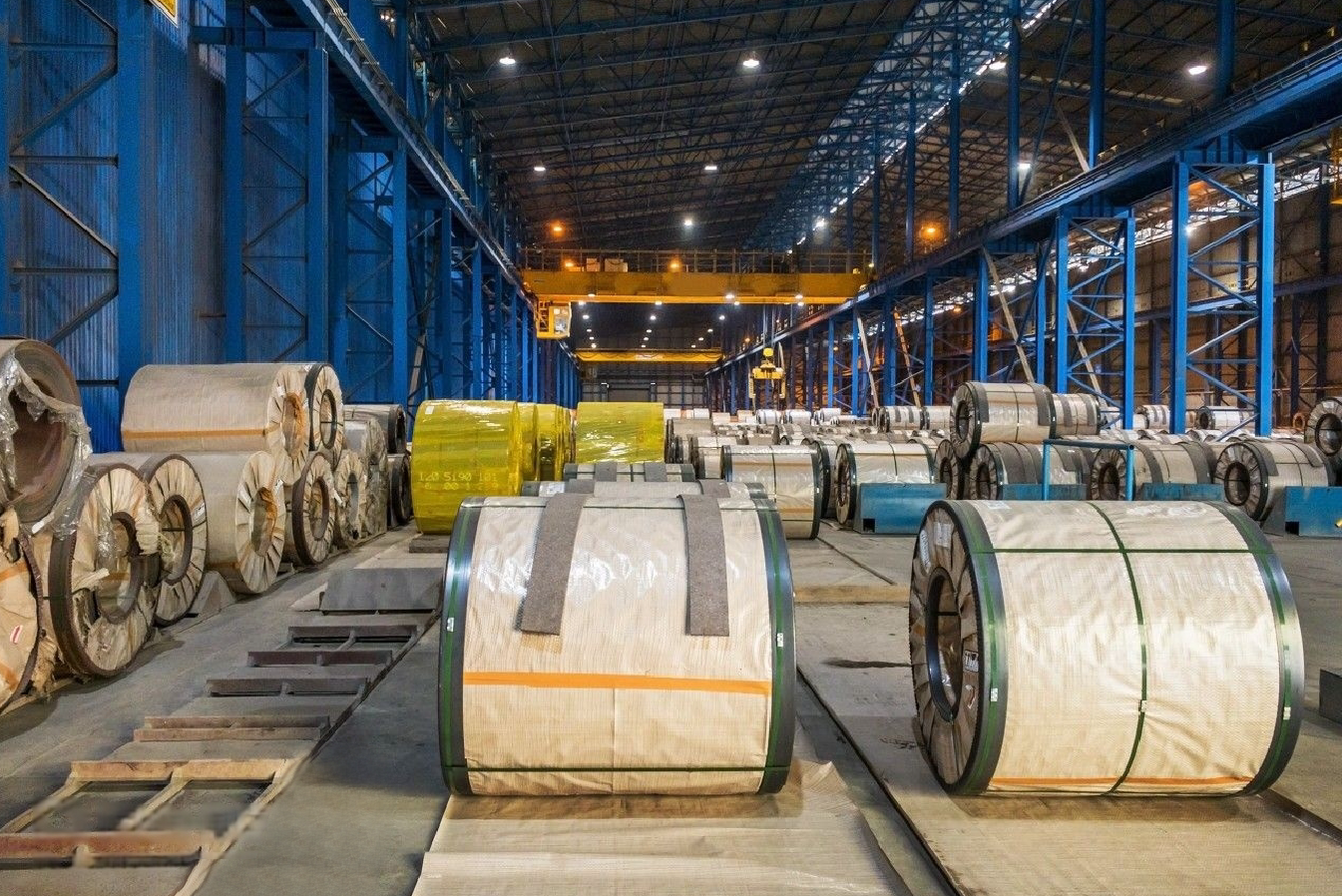
Are you concerned that receiving a stainless steel coil with the wrong dimensions could halt your entire production line? This common issue leads to costly delays, material waste, and frustrating operational bottlenecks, forcing you to scramble for solutions while your deadlines loom. Understanding coil ID and OD standards1 is the first step toward ensuring seamless operations.
Coil ID (Inner Diameter) and OD (Outer Diameter) are critical specifications that dictate a coil's compatibility with processing equipment and its overall handling logistics. Standard IDs are typically 508 mm (20 inches) and 610 mm (24 inches), ensuring they fit most standard uncoiling mandrels.
Navigating the complexities of international steel sourcing can be daunting, but it doesn't have to be. A small oversight in specifications can have a ripple effect on your entire project timeline and budget. This article will serve as your guide, empowering you to make informed decisions and secure the exact materials you need. We'll explore the standards, their impact, and how to ensure perfect compliance every time.
As someone who has been in the stainless steel industry for years, I've seen firsthand how a simple mismatch in coil dimensions can cascade into significant operational and financial problems for a client. It’s not just about the steel; it’s about how that steel integrates into your workflow. The debate isn't merely about standard versus non-standard sizes. It's a deeper conversation about the trade-offs between optimizing for material yield, minimizing scrap, and ensuring compatibility with your existing machinery. For instance, a larger OD might seem more cost-effective due to fewer changeovers, but can your cranes and uncoilers handle the weight and size? Conversely, a non-standard ID might perfectly fit a specialized machine but create sourcing challenges down the line. At MFY, we encourage our clients to think beyond the immediate purchase price and consider the total cost of ownership2, a principle that balances technical specifications with long-term operational efficiency.
What are the standard specifications for coil ID and OD?
Struggling to find coil specifications that fit your machinery? Ordering the wrong size can lead to equipment incompatibility and expensive modifications3. By understanding the universally accepted standards for coil ID and OD, you can prevent these issues and streamline your procurement process from the start.
The most common standard for stainless steel coil Inner Diameter (ID) is 508 mm (20 inches), with 610 mm (24 inches) also being widely used. The Outer Diameter (OD) is not standardized and varies based on the coil's weight and the thickness of the steel strip.
Understanding these foundational standards is the first step, but the real challenge lies in how these numbers translate to your specific operational context. For global buyers, especially those in dynamic markets like India or Southeast Asia, these specifications are more than just numbers—they are the bedrock of production efficiency. I’ve spoken with countless operations managers who have faced frustrating delays simply because a supplier provided a coil that, while technically within "standard" range, was at the extreme end of the weight or OD spectrum their equipment could handle. This is why a detailed conversation about your specific constraints and capabilities is crucial. It’s not just about ordering a "standard" coil; it’s about ordering the right standard coil for your unique setup. In the following sections, we will delve deeper into what defines these standards, how they differ globally, and how factors like coil weight and strip thickness play a critical role in determining the final OD. This knowledge will not only help you avoid costly purchasing mistakes but also empower you to optimize your raw material sourcing for maximum efficiency and yield.

The world of stainless steel is built on standards that ensure interoperability and efficiency across the global supply chain. For coils, the Inner Diameter (ID) and Outer Diameter (OD) are two of the most critical parameters, directly influencing everything from handling and storage to processing and production yield. While the concept seems simple, the practical application is nuanced, with different regions and industries adopting subtle variations. A firm grasp of these specifications is essential for any buyer looking to avoid costly mistakes and optimize their manufacturing process. For instance, a client of ours in the automotive sector in Russia required a very specific OD to maximize the number of parts stamped from each coil while minimizing changeover downtime. Their entire just-in-time system depended on this precision. This experience highlighted that while standards provide a baseline, true optimization often lies in the details that go beyond the numbers on a spec sheet. It involves a deep understanding of the interplay between weight, width, and thickness, and how these factors culminate in the final coil dimensions that arrive at your facility. This section will break down these components, providing a clear framework for understanding and specifying your exact needs.
Defining the Core Metrics: Coil ID and OD
The Inner Diameter (ID) is arguably the more critical of the two core standards because it dictates the compatibility of the coil with the uncoiler or mandrel of a processing line. The most widely adopted ID standards globally are 508 mm (approximately 20 inches) and 610 mm (approximately 24 inches). The choice between these two often depends on the machinery prevalent in a specific region or industry. For example, many processing lines in North America and Europe are designed around the 610 mm standard, while the 508 mm ID remains a common fixture in many Asian markets. Selecting the wrong ID renders the coil unusable without specialized adapters, leading to significant downtime and potential damage to equipment.
Unlike the ID, the Outer Diameter (OD) is not a fixed standard. Instead, it is a variable dimension that is a direct function of the coil's total weight, the material's thickness (gauge), and the strip's width. A heavier coil or a thicker gauge steel will naturally result in a larger OD for a given ID. Buyers must specify a maximum OD based on the physical limitations of their receiving bay, crane capacity, and processing line clearances. Forgetting to specify a maximum OD can lead to a coil that is simply too large to handle, creating a logistical nightmare.
Therefore, the conversation between buyer and supplier must be precise. It's not enough to say "a 20-ton coil." A complete specification will sound more like, "a 20-ton coil of 304 stainless steel, 1.5 mm thick and 1250 mm wide, with an ID of 508 mm and a maximum OD not to exceed 1800 mm." This level of detail removes ambiguity and ensures the supplier delivers a product that integrates seamlessly into the buyer's production flow. This is a conversation we at MFY have daily with our clients, ensuring every detail is confirmed before a single sheet is rolled.
Global Standards in Practice: A Comparative Look
While 508 mm and 610 mm are the dominant IDs, regional practices and industry-specific needs create a more complex picture. A buyer sourcing from different countries must be aware of these nuances. For instance, while JIS (Japanese Industrial Standards) and ASTM (American Society for Testing and Materials) standards are largely harmonized on core specifications, local mill practices can differ. In some emerging markets, you might encounter older equipment calibrated for non-standard IDs, requiring a supplier with flexible production capabilities.
Let's consider a practical example. A construction contractor in the Middle East might source coils for ductwork from both China and India. While both countries predominantly supply 508 mm ID coils, the typical coil weights might differ. Chinese mills, like MFY, often have the capacity to produce larger, heavier coils, which can lead to a larger OD. This can be an advantage for a high-volume user, as it reduces the number of coil changes. However, if the contractor's roll-forming equipment on-site has a lower weight limit, this advantage becomes a liability.
The following table illustrates how different parameters influence the final OD, assuming a standard 508 mm ID. This demonstrates why specifying only the weight is insufficient.
| Coil Weight (Metric Tons) | Strip Thickness (mm) | Strip Width (mm) | Estimated Outer Diameter (mm) | Primary Consideration |
|---|---|---|---|---|
| 10 MT | 0.8 mm | 1219 mm | ~1450 mm | Standard weight, manageable OD. |
| 10 MT | 2.0 mm | 1219 mm | ~1180 mm | Same weight, but thicker steel results in a smaller OD. |
| 20 MT | 1.0 mm | 1500 mm | ~1850 mm | Heavy coil, requires robust handling equipment. |
| 5 MT | 3.0 mm | 1000 mm | ~980 mm | Lighter coil, but thick gauge; OD is smaller. |
This comparison underscores the necessity for buyers to communicate their complete operational context. A supplier's ability to provide a Test Certificate that clearly states all dimensions, including the calculated OD, is a hallmark of a reliable partner. It bridges the gap between global standards and local operational realities.
The Role of Coil Weight and Slitting Width
The coil's weight and the width to which it is slit are critical factors that directly influence not only the OD but also the overall logistics and cost-effectiveness of the purchase. Coil weight is often determined by the production capacity of the steel mill's rolling and coiling equipment. Major mills can produce "jumbo" coils weighing upwards of 25-30 metric tons. These offer economies of scale, as they require fewer setups and handling operations per ton of steel processed. However, they are only suitable for buyers with heavy-duty cranes and uncoilers.
For many of our clients, especially distributors or manufacturers with smaller-scale operations, these jumbo coils are impractical. This is where the role of a service center like MFY becomes crucial. We purchase large mother coils from the mills and then slit them into narrower widths and rewind them into smaller, more manageable coils based on customer requirements. A customer manufacturing kitchen sinks, for example, may need a very specific width of 400 mm and a maximum coil weight of 5 tons to match their stamping press.
This process of slitting and recoiling directly impacts the final ID/OD configuration. When a wide coil is slit into multiple narrower coils, the OD of each new coil will be smaller, assuming the weight is distributed. Alternatively, a customer can request a specific weight, and the OD will be a function of that. This flexibility is a key strength of working with an integrated supplier. It allows buyers to move beyond the raw mill standards and procure material that is precisely tailored to their production needs, optimizing material yield and minimizing scrap in the process.
How do coil ID and OD standards impact the buying process?
Have you ever faced production delays because a new batch of coils didn't fit your machines? This frustrating problem often stems from overlooking ID and OD specifications during procurement. Aligning these standards with your operational setup is crucial for a smooth and efficient buying process.
Coil ID and OD standards directly impact the buying process by dictating equipment compatibility, logistical requirements, and cost. Buyers must match coil dimensions to their uncoilers and handling equipment, influencing supplier selection, pricing negotiations, and ensuring operational efficiency upon delivery of the material.
The purchasing decision for a commodity like stainless steel is rarely just about the per-ton price. I recall a conversation with a new client, an equipment integrator in Southeast Asia, who was focused solely on hitting a target cost. He had sourced coils from a supplier who offered a rock-bottom price but delivered coils with an inconsistent ID. The resulting downtime and the cost of manufacturing adapter rings for their mandrels completely wiped out the initial savings. This story is a powerful reminder that the true cost of a coil is not realized until it's been successfully processed. Therefore, the buying process must be a holistic one. It involves creating a detailed specification sheet, asking potential suppliers about their production tolerances4, and understanding the trade-offs between standard sizes that are readily available and custom dimensions that may offer higher yield but come with longer lead times. This strategic approach transforms procurement from a simple transaction into a competitive advantage.

The impact of coil ID and OD standards on the buying process extends far beyond a simple technical checkpoint; it fundamentally shapes the entire procurement strategy. These dimensions are the linchpin connecting the supplier's mill, the logistics chain, and the buyer's factory floor. An oversight at the specification stage can introduce friction at every subsequent step, leading to unforeseen costs and delays. For a buyer, understanding this impact means shifting their perspective from merely "buying steel" to "investing in production continuity." It involves a proactive dialogue with suppliers, a thorough audit of one's own operational capabilities, and a clear-eyed assessment of the total cost of ownership in coil procurement5. I once worked with a large manufacturing company in India that was scaling up its production. Their procurement team was excellent at negotiating price but initially overlooked the handling constraints of their new, automated facility. A shipment of attractively priced, heavy coils with a large OD sat on their dock for a week because their new automated guided vehicles (AGVs) couldn't handle the diameter, a costly lesson in the importance of holistic specification.
Equipment Compatibility: The First Point of Impact
The most immediate and disruptive impact of incorrect coil dimensions is on equipment compatibility. Every processing line, whether it's for stamping, roll-forming, or tube milling, is built around a specific range of coil specifications. The uncoiler's mandrel is designed for a precise Inner Diameter, typically 508 mm or 610 mm. A coil with the wrong ID simply will not fit. While makeshift solutions like adapter rings exist, they are inefficient, can cause issues with coil centering, and introduce potential safety risks. For high-speed, automated lines, such modifications are often not viable at all, leading to a complete halt in production.
Beyond the ID, the Outer Diameter and coil weight are equally critical. The physical space of the coil cradle, the capacity of the loading car, and the power of the uncoiler motor all have maximum limits. A coil that is too heavy or has too large an OD can strain the equipment, leading to premature wear and tear or even catastrophic failure. I remember a case with a client in the construction sector who purchased coils for roofing applications. They focused on maximizing weight to reduce changeovers but received coils with an OD that exceeded their line's clearance by a mere 50 mm. This small discrepancy forced them into a costly and time-consuming process of partially unspooling every coil before it could be loaded.
This is why the buying process must begin with a detailed internal audit of the processing line's capabilities. The purchase order should not be a generic request but a precise document that lists the required ID, a maximum OD, and a maximum weight. This clarity at the outset is the buyer's first line of defense against production disruptions. It shifts the responsibility to the supplier to guarantee compliance, making it a non-negotiable term of the purchase.
Logistics and Handling: The Unseen Costs
The influence of coil ID and OD extends backward from the factory floor into the entire logistics and handling chain. The journey of a coil from the mill to the machine is fraught with potential bottlenecks if its dimensions are not considered. A coil's weight, which is linked to its OD, dictates the type of transport required—be it a flatbed truck, a railcar, or a shipping container. Overly heavy or wide coils may require special permits and transport equipment6, adding significant cost and complexity to the shipment.
Upon arrival at the buyer's facility, the handling process begins. The capacity of overhead cranes or forklifts is the first checkpoint. A 25-ton coil cannot be moved by a 20-ton crane. The coil's OD also affects storage. Warehouse racking systems are often designed for a maximum diameter, and oversized coils may require being stored on the floor, consuming valuable space and creating a less organized, potentially unsafe environment. I worked with a distributor who, in an effort to stock up, purchased a large volume of heavy coils. Their large OD meant they could only store them in a single layer, effectively halving their warehouse capacity and creating a logistical mess.
The table below outlines some key logistical checkpoints and the corresponding coil dimension considerations. This serves as a checklist for buyers to review their internal capabilities before placing an order.
| Logistical Stage | Key Consideration | Impacting Dimension(s) | Potential Issue if Mismatched |
|---|---|---|---|
| Transportation | Truck/Railcar Weight Limit | Coil Weight | Fines, need for special permits. |
| Unloading | Crane/Forklift Capacity | Coil Weight | Inability to unload, equipment damage. |
| Storage | Warehouse Racking Size | Outer Diameter (OD) | Inefficient use of space, safety hazards. |
| Internal Transport | AGV/Coil Car Capacity | Weight & OD | Production line starvation, manual handling. |
| Loading onto Line | Uncoiler Loading Mechanism | Weight & OD | Inability to load coil, equipment strain. |
By mapping out this entire process, buyers can identify potential friction points and incorporate them into their specifications. This proactive approach prevents the "unseen" costs of handling and logistics from eroding the profitability of the purchase.
Sourcing and Lead Times: Standard vs. Custom
ly, coil dimension standards have a profound impact on sourcing strategy, specifically concerning availability and lead times. Standard-sized coils, particularly those with a 508 mm or 610 mm ID and falling within a common weight range (e.g., 5-15 tons), are often held in stock by large mills and service centers like MFY. This ready availability makes them ideal for buyers who need rapid delivery to meet urgent production schedules. Sourcing standard coils is typically a straightforward process with competitive pricing due to the economies of scale in their production.
The dynamic changes when a buyer requires non-standard dimensions. A custom ID, a very specific weight, or an unusually narrow or wide slitting width requires a dedicated production run. While this offers the benefit of a perfectly tailored product that can maximize yield, it comes with trade-offs. Lead times will inevitably be longer, as the order must be scheduled into the mill's production cycle. There may also be a minimum order quantity (MOQ) required to justify the setup for a custom run.
The buyer's decision-making process must therefore balance efficiency and urgency. If the production line is flexible and the potential material savings from a custom size are significant, waiting for a custom order might be the most strategic choice. However, for a just-in-time manufacturing environment, the reliability and speed of sourcing standard coils are paramount. A smart sourcing strategy often involves a mix: using standard coils for the bulk of production and strategically ordering custom sizes for specialized products where the benefits clearly outweigh the longer lead time and potential extra cost. At MFY, our integrated model allows us to offer both—we maintain a robust inventory of standard coils for immediate export while having the processing capability to produce custom sizes efficiently.
What are the key considerations for evaluating coil coil ID and OD suitability?
Choosing the right coil dimensions feels like a high-stakes decision, doesn't it? The fear is that a wrong choice could lead to wasted material or equipment strain. The solution is to evaluate suitability not just on price, but on a holistic view of your production capabilities.
Key considerations for evaluating coil ID and OD suitability include your uncoiling equipment's mandrel size and weight capacity, material handling limitations (cranes, forklifts), storage space, and the desired balance between production efficiency (fewer changeovers with larger coils) and material yield (custom widths).
Evaluating suitability goes beyond a simple checklist; it's a strategic assessment of your operational ecosystem. I encourage my clients to think of it as "right-sizing" their inventory. A client running a tube mill in Russia, for instance, worked with us to analyze their changeover times versus their scrap rate. We determined that a slightly heavier coil with a custom-slit width, while having a longer lead time, would ultimately increase their production output by 15% by reducing both scrap and downtime. This is the level of analysis required. It involves looking at your machinery's data plates, talking to your line operators, and mapping your process flow to identify the optimal coil specifications that will deliver the lowest total cost of production, not just the lowest purchase price.
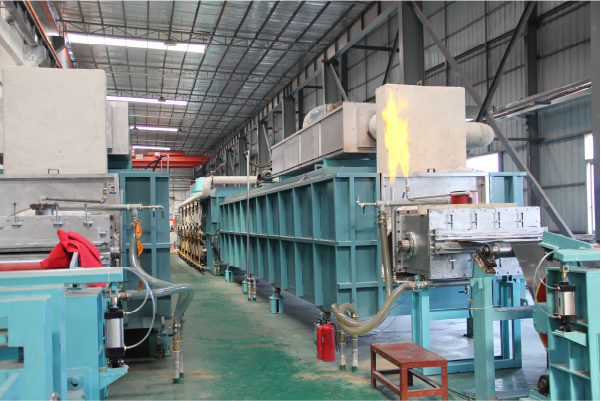
Evaluating the suitability of a coil's ID and OD is a critical exercise in aligning raw material inputs with the specific nuances of your manufacturing process. It's a decision that directly impacts operational efficiency, cost-effectiveness, and even worker safety. A superficial evaluation based on common standards alone is insufficient. A truly suitable coil is one that has been specified with a deep understanding of the buyer's internal capabilities and production goals. This requires a shift in mindset from passive acceptance of "standard" sizes to a proactive process of defining the "optimal" size. I often tell my partners that the perfect coil specification is a blueprint for profitability. It reflects a harmony between the material you buy and the way you use it. This evaluation process can be broken down into three critical areas: a thorough analysis of your production line's physical constraints, a strategic balancing of material yield against handling efficiency, and a forward-looking approach to future-proof your specifications.
Analyzing Your Production Line's Constraints
The first and most fundamental step in evaluating coil suitability is to conduct a rigorous audit of your production equipment's physical and mechanical limitations. This is a non-negotiable starting point. You must move beyond assumptions and gather hard data directly from your machinery and facility. The Inner Diameter7 is the most straightforward constraint: what is the size of your uncoiler's mandrel? Is it fixed at 508 mm or 610 mm, or is it expandable? Answering this question definitively will immediately narrow your sourcing options and prevent the most basic of compatibility errors.
Next, assess the weight and Outer Diameter limitations at every stage of the coil's journey within your plant. Start at the receiving dock: what is the maximum lifting capacity of your cranes or forklifts? Follow the path to storage: what is the maximum OD and weight your racking systems can safely support? Next, analyze the processing line itself. What is the maximum weight the coil car can handle? What is the maximum OD that will fit within the physical clearances of the uncoiler station? Document these maximum values—they form the absolute boundaries for your coil specifications.
I once worked with a client who had upgraded their processing line but had not upgraded their older overhead cranes. They ordered heavier coils to match their new line's capacity, only to realize they couldn't lift them off the trucks. This costly oversight could have been avoided with a simple, end-to-end audit. This analysis provides a clear, data-driven framework that removes guesswork and empowers you to define specifications that your facility can handle safely and efficiently.
Balancing Material Yield and Handling Efficiency
Once you have established your physical constraints, the next consideration is more strategic: finding the optimal balance between maximizing material yield and maintaining handling efficiency. These two goals can sometimes be in opposition. For instance, a very wide "mother coil" might offer a lower per-ton price from the mill, but if your final product is narrow, you will incur the cost and scrap loss associated with slitting it in-house. In this case, sourcing a pre-slit coil of the exact width you need, while potentially having a higher initial price, can lead to a lower total cost due to near-zero material waste.
Conversely, consider the impact of coil weight and OD on handling efficiency. Larger, heavier coils mean fewer changeovers on the production line. For a high-volume, continuous operation like tube manufacturing or large-scale stamping8, minimizing downtime for coil changes is a massive driver of productivity. Every minute saved by avoiding a coil change is a minute of profitable production. In this context, specifying the largest coil your equipment can safely handle is the most efficient choice.
The key is to perform a cost-benefit analysis. Calculate the value of the potential scrap reduction from using custom-slit widths. Then, calculate the value of the production uptime gained by using heavier coils. I helped a customer in the appliance manufacturing sector create a simple model for this. We compared the cost of wasted steel from their current standard-width coils against the projected increase in output from reducing coil changeovers. The data made it clear that ordering slightly heavier, custom-width coils from MFY would deliver a net benefit of over $50,000 annually, a powerful argument for looking beyond the standard spec sheet.
| Decision Factor | Pro (Benefit) | Con (Drawback) | Best For... |
|---|---|---|---|
| Using Heavier Coils | Fewer changeovers, more uptime. | Requires robust handling equipment. | High-volume, continuous production. |
| Using Lighter Coils | Easier to handle, less strain. | More frequent changeovers, downtime. | Smaller-scale or project-based work. |
| Using Custom-Slit Widths | Minimizes scrap, higher yield. | Longer lead times, potential MOQ. | Operations with high material cost and fixed product dimensions. |
| Using Standard Widths | Readily available, faster delivery. | Can result in significant edge trim scrap. | Just-in-time needs or varied product dimensions. |
Future-Proofing Your Coil Specifications
A final, often overlooked consideration is to future-proof your coil specifications. The choice you make today should not only serve your current needs but also align with your company's future plans. Are you planning to upgrade your processing lines in the next few years? Will you be introducing new products that require different material widths? Sourcing decisions should be made with an eye toward this evolution.
For example, if you are planning a facility upgrade that will include higher-capacity cranes and uncoilers, you might continue to order smaller coils for now but begin a dialogue with your supplier about their capabilities to provide heavier coils in the future. This ensures a smooth transition when the new equipment is commissioned. At MFY, we value these long-term partnerships, and understanding a client's growth trajectory allows us to anticipate their future needs and scale our supply accordingly.
Furthermore, consider market trends. As technology evolves, there may be a shift in standard practices. Building a relationship with a knowledgeable and forward-looking supplier can provide valuable insights. A good supplier is more than a vendor; they are a partner who can advise you on new materials, emerging standards, and innovative processing techniques that can give you a competitive edge. By evaluating coil suitability through this forward-looking lens, you transform a simple procurement task into a strategic component of your company's growth and resilience.
How can buyers ensure compliance with coil ID and OD standards?
Worried that you'll receive a coil that doesn't meet your specifications? This valid concern can be mitigated by moving from trust to verification. Ensuring compliance requires a clear, systematic process that leaves no room for error and protects your production from unexpected disruptions.
Buyers can ensure compliance by providing a detailed purchase order with precise ID, maximum OD, and weight specifications. It's also crucial to request and review the supplier's Mill Test Certificate (MTC) before shipment, which verifies the physical dimensions and properties of the coil.
This process is about creating a chain of accountability. I always advise my clients to make the detailed specification sheet and the MTC integral parts of the purchasing contract9. For example, a client manufacturing precision parts for the electronics industry in Southeast Asia now includes a clause in their POs that allows them to reject a shipment if the measured dimensions on arrival deviate from the MTC by more than a tiny, agreed-upon tolerance. This isn't about a lack of trust; it's about creating a shared understanding of the critical importance of precision. It forces both the buyer and the supplier to be diligent. In the following sections, we will explore how to structure these documents, the importance of supplier audits, and how building a collaborative relationship with your supplier is the ultimate key to ensuring consistent and reliable compliance.
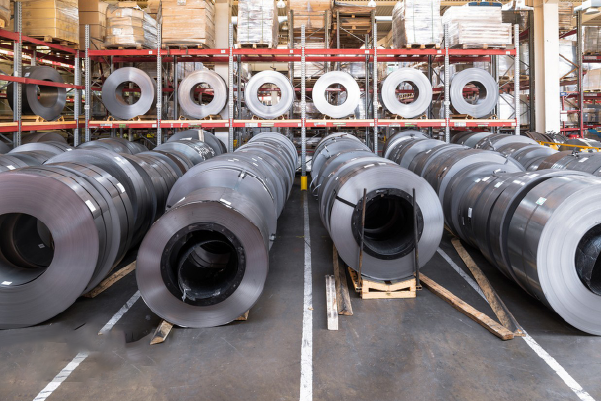
Ensuring compliance with coil ID and OD standards10 is not a passive activity; it is an active process of communication, verification, and partnership. It's the mechanism that translates a buyer's requirements into a physical product that performs as expected. The risk of non-compliance is too great to be left to chance—it can halt production, strain capital, and damage business relationships. A robust compliance strategy is built on a foundation of clear documentation, backed by rigorous verification, and sustained by a transparent, collaborative relationship with the supplier. It's about creating a system where, as a buyer, you can have confidence that what you order is exactly what you will receive. I've seen the difference firsthand. Clients who implement these compliance steps move from experiencing frustrating supply chain issues to enjoying seamless, predictable operations. Their focus shifts from firefighting to strategic growth, all because they established a reliable and verifiable procurement process.
The Importance of a Detailed Purchase Order
The Purchase Order (PO) is the foundational legal document in the procurement process, and its level of detail is directly proportional to the likelihood of receiving a compliant product. A vague PO is an invitation for ambiguity and error. To ensure compliance, the PO must be treated as a technical specification sheet. It should go far beyond simply stating the material grade and tonnage. A compliance-focused PO must explicitly and clearly state the critical dimensional parameters.
At a minimum, the PO must specify:
- Inner Diameter (ID): State the exact required dimension (e.g., "508 mm ID"). If your equipment has any flexibility, you can state an acceptable range, but a precise target is always better.
- Maximum Outer Diameter (OD): This is a critical constraint based on your handling and processing limitations. State it clearly (e.g., "Maximum OD not to exceed 1800 mm").
- Maximum Coil Weight: Similarly, specify the absolute maximum weight your cranes, coil cars, and uncoilers can safely handle (e.g., "Maximum coil weight 15 metric tons").
- Width and Tolerances: Specify the required slit width and the acceptable tolerance (e.g., "Width 1219 mm +/- 0.5 mm").
By embedding these technical details directly into the commercial document, you are creating a binding agreement. The supplier is now contractually obligated to meet these specifications. I have personally helped clients redraft their PO templates to include a dedicated "Technical Compliance" section. This simple change has drastically reduced the incidence of dimensional errors, as it forces a focused conversation on these parameters before the contract is even signed. It transforms the PO from a simple order form into a powerful quality assurance tool.
Supplier Audits and Mill Test Certificates (MTC)
Verification is the second pillar of a strong compliance strategy. You need a mechanism to confirm that the supplier has met the specifications outlined in your detailed PO. There are two primary tools for this: supplier audits and the Mill Test Certificate (MTC). While a full-scale audit may not be practical for every purchase, understanding a supplier's quality control processes is crucial. During negotiations, ask about their measurement procedures. How do they verify coil dimensions and weight before shipment? Do they use calibrated equipment? A reputable supplier will be able to answer these questions confidently and provide documentation of their processes.
The most critical piece of verification you will receive for every order is the Mill Test Certificate (MTC), sometimes called a Mill Test Report (MTR). This document is the coil's "birth certificate." It is issued by the manufacturer and contains vital information about the coil, including its chemical composition, mechanical properties, and, crucially, its physical dimensions. Before authorizing shipment, you should always request a copy of the MTC for the exact coil or batch being sent to you.
Carefully review the MTC to ensure the listed ID, OD (often calculated or measured), and weight match the requirements on your PO. The table below shows a simplified example of what to look for in an MTC's physical properties section.
| Parameter on MTC | PO Requirement | Compliance Check |
|---|---|---|
| Heat No: 12345 | N/A | For traceability. |
| Material Grade: 304 | SS 304 | PASS |
| Thickness: 1.50 mm | 1.50 mm | PASS |
| Width: 1218.8 mm | 1219 mm +/- 0.5 mm | PASS |
| Inner Diameter: 508 mm | 508 mm | PASS |
| Net Weight: 14,850 kg | Max 15,000 kg | PASS |
Making the review and approval of the MTC a mandatory step before the goods leave the port provides a final, critical checkpoint. It allows you to catch any discrepancies before they become a logistical problem at your facility.
Building a Collaborative Partnership with Your Supplier
Ultimately, the most effective way to ensure long-term, consistent compliance is to move beyond a purely transactional relationship and build a collaborative partnership with your supplier. When a supplier understands your business, your equipment, and your goals, they transition from being a simple vendor to a valuable part of your supply chain. This is a core philosophy at MFY. We don't just sell steel; we provide solutions.
A collaborative partnership is built on open communication. Share information about your production lines and any challenges you face. A good supplier can use this information to offer expert advice. For example, they might suggest a slight change in coil weight that could improve your line's efficiency or recommend a different slitting plan to improve material yield. This proactive collaboration can prevent problems before they even occur.
Furthermore, a long-term partner has a vested interest in your success. They are more likely to prioritize your orders, maintain consistent quality, and work with you to resolve any issues that may arise. When I work with a client over several years, I come to know their needs as well as they do. This deep understanding allows my team to flag potential issues and make recommendations that a new supplier simply wouldn't be able to. In a global market, having a reliable partner in your supply chain is an invaluable asset. It is the ultimate guarantee of compliance and a powerful driver of competitive advantage.
What expert recommendations are available for purchasing coils with the correct ID and OD?
Feeling uncertain about specifying the right coil dimensions for your next order? You're not alone. The key to confident purchasing lies in shifting your focus from short-term cost to long-term value, leveraging your supplier's expertise, and making data-driven decisions for your specific operational context.
Experts recommend prioritizing a detailed specification in the purchase order, verifying dimensions with a Mill Test Certificate before shipment, and fostering a collaborative relationship with a knowledgeable supplier who understands your specific equipment constraints and production goals, ensuring total cost of ownership is considered.
My most important recommendation is to treat your supplier as a partner, not just a vendor. I recently worked with an engineering contractor on a large project in the Middle East. By discussing their on-site roll-forming capabilities and project schedule in detail, we were able to devise a delivery plan of coils with optimized ODs that minimized both material handling and production downtime. This collaboration was only possible because they shared their operational details, and we, in turn, shared our production expertise. This synergy is where true value is created. The following deep-dive will provide more actionable strategies, showing how a focus on long-term value, leveraging supplier knowledge, and strategic sourcing can transform your procurement process and guarantee you get the right coil every time.

When it comes to purchasing stainless steel coils, the expert recommendations converge on a single theme: strategic sourcing over transactional buying11. Getting the ID and OD right isn't a matter of luck; it's the result of a deliberate, intelligent procurement process. Novice buyers often focus exclusively on the price per ton, a metric that reveals very little about the material's true cost once it hits the production floor. Seasoned experts, however, understand that the most significant costs are often hidden in operational inefficiencies—downtime, material waste, and logistical bottlenecks. Therefore, their advice centers on mitigating these risks by making informed, holistic decisions. The following recommendations are distilled from years of experience in the global steel trade, helping clients like you move from uncertainty to mastery in their coil purchasing. These are not just tips; they are pillars of a robust strategy designed to enhance efficiency and profitability.
Prioritizing Long-Term Value Over Short-Term Cost
The most fundamental shift an expert buyer can make is to evaluate coil purchases based on Total Cost of Ownership (TCO)12 rather than the upfront price. The cheapest coil is rarely the most cost-effective. A coil priced a few dollars less per ton can end up costing you hundreds or thousands in lost production if its dimensions are out of spec. TCO forces you to consider all the associated costs: the price of the steel, shipping, handling, storage, scrap loss, and the cost of production downtime.
To put this into practice, start by quantifying the cost of inefficiency in your own operations. What is the dollar value of one hour of downtime on your main production line? How much does edge-trim scrap cost your company each year? Once you have these numbers, you can begin to make data-driven trade-offs. For example, a custom-slit coil might have a 5% higher purchase price, but if it reduces your scrap rate by 10%, it's a clear financial win. I guided a client in the automotive components industry through this exact analysis. They discovered that the "cheap" standard-width coils they were buying were costing them nearly six figures annually in material waste.
This long-term value approach also extends to supplier selection. A reliable supplier who consistently delivers dimensionally accurate coils might not always have the absolute lowest price on the quote sheet. However, the value they provide in terms of reliability, predictability, and risk reduction is immense. This is the essence of strategic sourcing: investing in partners and materials that bolster the long-term health and efficiency of your operation.
Leveraging Your Supplier's Expertise
An experienced, technically proficient supplier is one of the most valuable resources a buyer can have. Do not view your supplier as a mere order-taker; see them as a consultant and an extension of your own team. A quality supplier, especially an integrated manufacturer and service center like MFY, has deep knowledge of the entire production process, from the steel mill to the slitting line. Leverage this expertise to your advantage.
When initiating an inquiry, don't just send a request for a quote. Start a conversation. Explain what you are manufacturing, describe your equipment, and be open about your production challenges. A knowledgeable sales director or technical expert can use this information to provide recommendations you may not have considered. They can advise on the optimal coil weight to balance handling efficiency and changeover frequency. They can suggest slitting patterns that maximize material yield for your specific part dimensions. They can also provide insight into different material grades or finishes that might improve your end product.
For example, a customer came to us for a standard 316L coil. After discussing their application—a corrosive marine environment—we were able to recommend a specific finish that offered enhanced corrosion resistance without a significant price increase. This type of value-added advice is only possible when the buyer is willing to engage the supplier collaboratively. Remember, your supplier handles thousands of tons of steel and works with dozens of companies like yours. Tapping into that well of experience is a free and powerful way to optimize your purchasing decisions.
A Case Study in Strategic Sourcing: The MFY Approach
Let's tie these recommendations together with a real-world, albeit anonymized, example that reflects our approach at MFY. A large construction contractor in Southeast Asia was awarded a contract for a major infrastructure project requiring thousands of tons of stainless steel structural components. Their initial approach was to send out a simple RFQ for a standard grade of steel to the lowest bidder.
Recognizing the scale of the project, our team took a different approach. We requested a meeting with their project and operations managers. We didn't start by talking about price; we started by asking about their on-site roll-forming machines, their project timeline, their material handling capabilities, and their labor costs. We discovered their machines could handle heavier coils than they typically ordered, and that their biggest project risk was potential delays.
Using this information, we developed a comprehensive proposal that included:
- Optimized Coil Dimensions: We recommended slightly heavier coils with a larger OD that would reduce the number of changeovers by 20%, significantly increasing their production speed.
- Custom Slitting: The components required a specific width. We offered to deliver pre-slit coils, eliminating on-site slitting, reducing their scrap to almost zero, and freeing up their labor for other tasks.
- Staggered Delivery Schedule: We created a just-in-time delivery schedule that shipped coils directly to their site as needed, reducing their on-site storage requirements and capital outlay.
The table below contrasts their initial approach with the final strategic solution.
| Procurement Aspect | Initial "Lowest Price" Approach | Strategic Sourcing (MFY) Approach | Outcome |
|---|---|---|---|
| Coil Specification | Standard weight & width coils. | Optimized heavier, custom-width coils. | 20% fewer changeovers, near-zero scrap. |
| Focus | Price per ton. | Total project cost & efficiency. | Lower overall project cost. |
| Logistics | Bulk upfront delivery. | Staggered just-in-time schedule. | Reduced storage needs & capital risk. |
| Supplier Relationship | Transactional. | Collaborative partnership. | Proactive problem-solving, reduced risk. |
While our per-ton price was not the absolute lowest on the initial quote, our proposed solution delivered a significantly lower total project cost and a higher degree of certainty. The contractor chose our proposal because they recognized the immense value in a strategic sourcing plan that was tailored to their specific needs. This is the expert recommendation in action: buy solutions, not just steel.
Conclusion
Ultimately, mastering coil ID and OD standards transforms procurement from a gamble into a science. By meticulously analyzing your equipment, communicating precise specifications, verifying with MTCs, and partnering with a knowledgeable supplier, you can ensure every coil you purchase enhances, rather than hinders, your operational efficiency.
-
Learn why coil dimension standards are critical for compatibility and smooth industrial operations ↩
-
Understand the broader financial impact of coil specification choices ↩
-
Avoid equipment damage and costly delays from size mismatches ↩
-
Learn about standard and custom tolerance levels when specifying coil dimensions to suppliers ↩
-
Discover methods to assess logistics, processing, and downtime in total coil purchase costs ↩
-
Find regulations and logistics tips for moving large or overweight coils to your facility safely ↩
-
Get correct methods for specifying and measuring coil inner diameter for your equipment ↩
-
Learn why high-volume operations usually prefer larger coil formats for fewer stoppages ↩
-
Discover best practices for using MTCs as contractual documentation for quality assurance ↩
-
Find standard IDs and ODs required for steel coils and understand industry compliance requirements ↩
-
Discover how strategic sourcing adds value and reduces risk in coil procurement. ↩
-
See how TCO evaluation uncovers hidden costs and improves purchasing decisions in manufacturing. ↩
Have Questions or Need More Information?
Get in touch with us for personalized assistance and expert advice.
